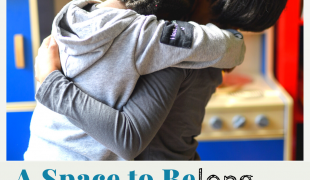- 3166
- 242
- 9
- 11
- 0
- Help Ukraine
About the solution
Eating disorders are behavioral conditions characterized by severe and persistent disturbance in eating behaviors and associated distressing thoughts and emotions.
Taken together, they affect up to 5% of the population, and most often develop in adolescence and young adulthood.
Christine decided to create a board game that simulates the tumultuous and complicated journey of someone who suffers from an eating disorder, all based on her own personal experience.
The game only needs one player and comes with playing cards, instructions and a game board. There are three types of cards: New day (anecdotes from small, random moments from her experience), Relapse (anecdotes from moments she felt she had relapsed into unhealthy behavior), and Recovery (anecdotes from moments she felt she had made genuine progress). The player will begin on any colored square, and follow the commands of the cards as they play.
She envisions this game in a waiting room for a therapist or school counselor’s office and a health clinic.
The goal of the game is to possibly help someone with an undiagnosed ED recognize their noxious behavior and also show the people who have a diagnosed ED that they are not alone.
Tough to swallow can also be used as a way to create empathy and understanding if you know someone who suffers from an ED. This is a non-linear game and it has some confusing and contradictory commands (like forward 1 space and back 2), but it’s a way of following the irregular footsteps of someone with an ED, as well as the recovery process. As Christine says “When you play Tough to Swallow you’re a winner with every roll and a loser only when you call it quits”.
For more informations: https://www.jmu.edu/wrtc/_files/rhettech-vol-1/toughtoswallow.pdf
This solution shall not include mention to the use of drugs, chemicals or biologicals (including food); invasive devices; offensive, commercial or inherently dangerous content. This solution was not medically validated. Proceed with caution! If you have any doubts, please consult with a health professional.
DISCLAIMER: This story was written by someone who is not the author of the solution, therefore please be advised that, although it was written with the utmost respect for the innovation and the innovator, there can be some incorrect statements. If you find any errors please contact the patient Innovation team via info@patient-innovation.com
-
-
459
-
0
-
6782

Mum creates a play space as antidote to isolation for her son
Playing
Social interaction
Autism
Cervical spinal cord injury/Tetraplegia
In Person service
Strategy/Tip
Building Supportive Community Relationships
Promoting inclusivity and social integration
To improve Treatment/Therapy
Raise awareness
Caregiving Support
Child and Adolescent Psychiatry
Neurology
Pediatrics
Psychiatry
United States
-
-
-
232
-
0
-
2406

Mom Clare Tawell Makes Inclusive Dolls- Bright Ears UK- to Help Children With Disabilities Feel Accepted
Playing
Hearing Disorders
Educational/Leisure device (book, toy, game...)
Building Supportive Community Relationships
Promoting inclusivity and social integration
Preventing (Vaccination, Protection, Falls, Research/Mapping)
Support on Puerperium/Post-childbirth
Raise awareness
Caregiving Support
Child and Adolescent Psychiatry
General and Family Medicine
Otorhinolaryngology
Pediatrics
United Kingdom
-
-
-
274
-
0
-
3175

Christyn and her daughter Rebecca Taylor created Camp Hope, a free, overnight summer camp tailored for children with pancreatitis.
CAREGIVING
Social interaction
COMMUNICATION: Communicating, whether by speaking, listening, or other means
Hiking
Football
pancreatitis
In Person service
Treatment/Surgical device
Educational/Leisure device (book, toy, game...)
Managing pain
Promoting self-management
Manage Medication
Building Supportive Community Relationships
Promoting inclusivity and social integration
Enhancing Mental Health
To improve Treatment/Therapy
Preventing (Vaccination, Protection, Falls, Research/Mapping)
Raise awareness
Caregiving Support
Child and Adolescent Psychiatry
Gastroenterology
General and Family Medicine
Pediatrics
United States
-
 en
en